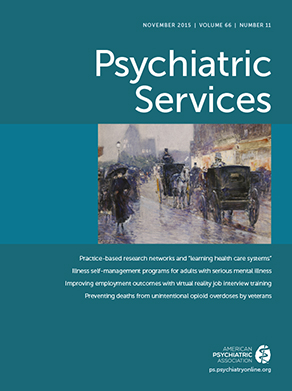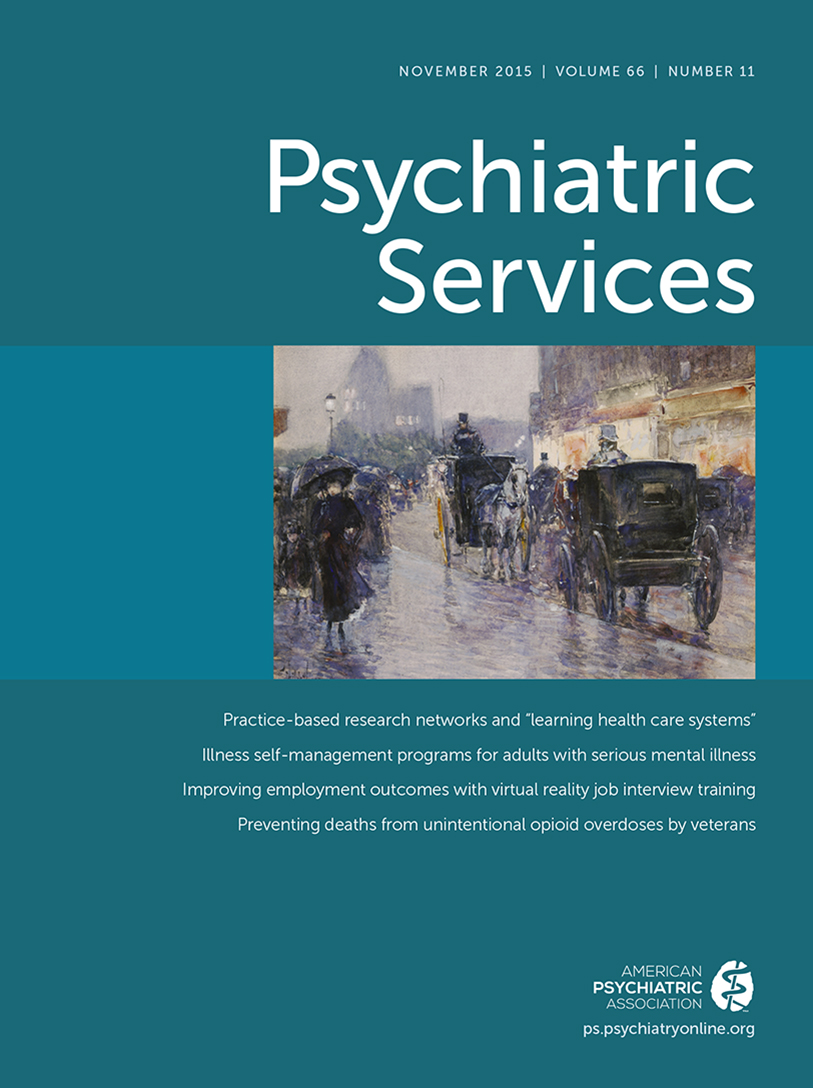TO THE EDITOR: In our column in this issue (
1), we discuss the formation of a practice-based research network (PBRN) by mental health providers and how a card study was used to generate R3 rapid-learning research designs (
2). Here, we briefly report the findings of that initial study, which focused on integrated general medical and mental health care services directed by mental health providers. We chose this topic because most service-level intervention strategies targeting this health disparity for individuals with serious mental illnesses have focused on how general medical providers can direct and improve health care for this population. Mental health providers can also effectively lead these efforts, but more research is needed on integrated services that are organized or provided by mental health agencies (
3).
A brief cross-sectional survey about integrated services received through their mental health agencies was completed with 237 individuals with serious mental illness. Each of the PBRN agencies had been offering integrated services for 18 months at the time of the survey (
1). The nine-item card study asked participants to rate changes in several domains since they began receiving integrated services. The service models differed at each agency, ranging from use of specially trained service integrators, who help consumers use the resources of both formal provider networks (mental health and health care providers) and nontraditional provider networks (community-defined healers); an integrated mobile health team; a collaborative outpatient clinic; and peer health navigators (
4,
5). Each agency delivered integrated services to a small subset of consumers (ranging from 110–250). During one month, staff members from each agency invited consumers with serious mental illnesses to participate in the survey. Surveys took about ten minutes to complete, and participants did not receive any compensation.
Fifty-eight percent (N=138) identified as male with a mean±SD age of 47.4±11.5 years. The sample was diverse: 27% (N=63) Caucasian, 22% (N=52) Hispanic, 21% (N=49) African American, 16% (N=38) Armenian, and 10% (N=25) other; and 4% (N=10) had missing data.
Respondents experienced statistically significant reductions in their use of emergency services, more use of primary care services, increased access to care, better general medical health, fewer general medical symptoms, improved mental health, increased ability to meet mental health treatment goals, healthier lifestyles, and high satisfaction with services. [A table in an online supplement to this letter presents these and other results.] We also found that older participants had a weaker response to integrated services: they experienced less mental health improvement, less ability to meet treatment goals, and unchanged emergency room use. Few differences were noted across agencies, which could reflect responses to the various forms of integrated care. These are findings that can be immediately moved into practice.
The results suggest that mental health agencies can effectively launch PBRNs to capture important data about the impact of their services. Although this study was not methodologically rigorous, it allowed the nascent PBRN to coalesce around a significant question that interested and had an impact on many of the stakeholders (consumers, staff, community partners, and funders). As PBRNs mature they are capable of mounting rigorous studies with significant funding, and in mental health care they can bridge practice and research and blend evidence-based practice with practice-based evidence in ways that are novel and compelling. PBRNs are underdeveloped in mental health services, but that can change.
Acknowledgments
The authors thank their invaluable collaborators on this project: Holly Kiger, R.N., M.N., Mathew Meyer, Ph.D., Rebecca Gaba, Ph.D., Laura Pancake, L.C.S.W., Lezlie Murch, M.A., L.P.C.C., David Pilon, Ph.D., and Lyndee Knox, Ph.D.

